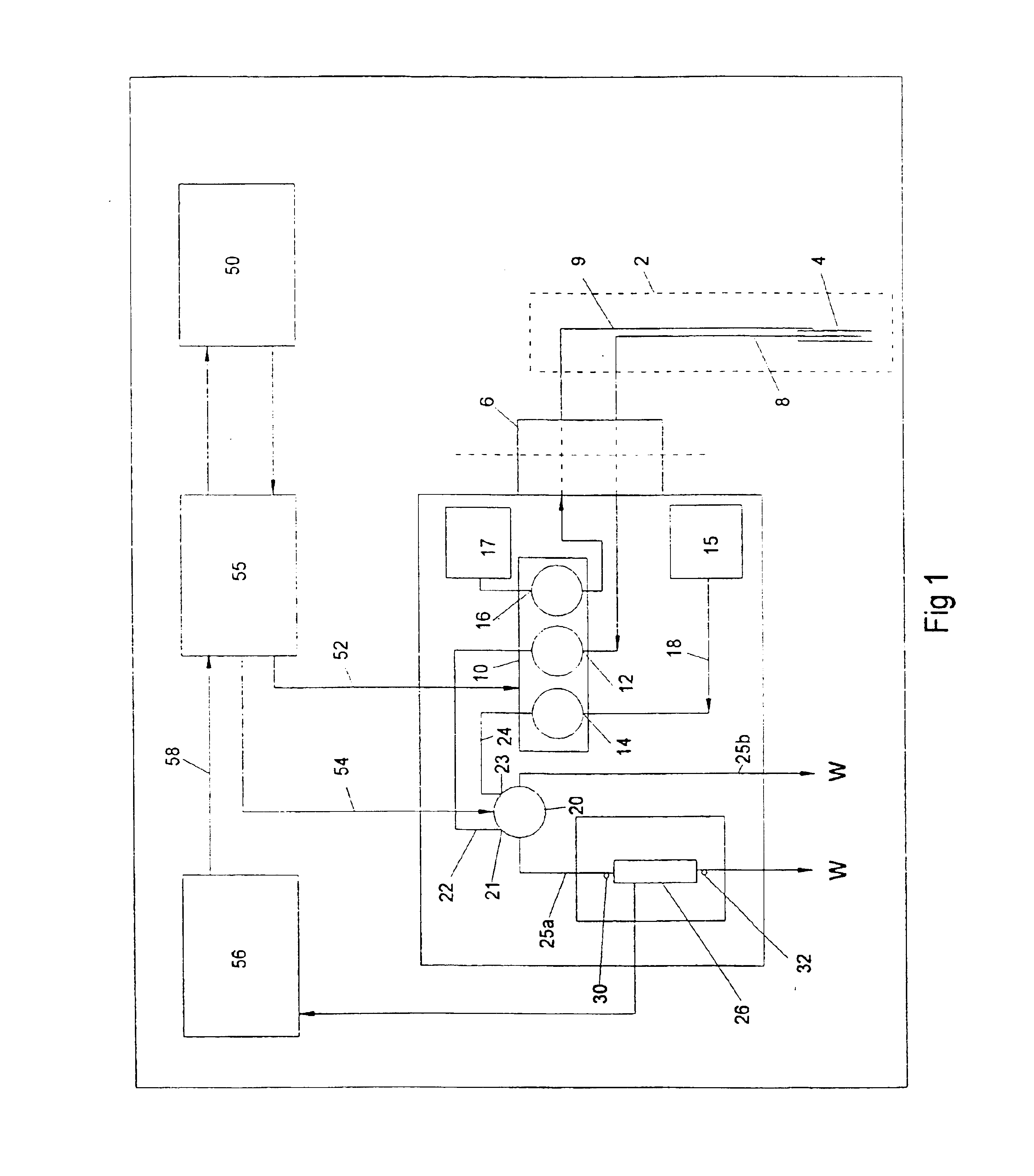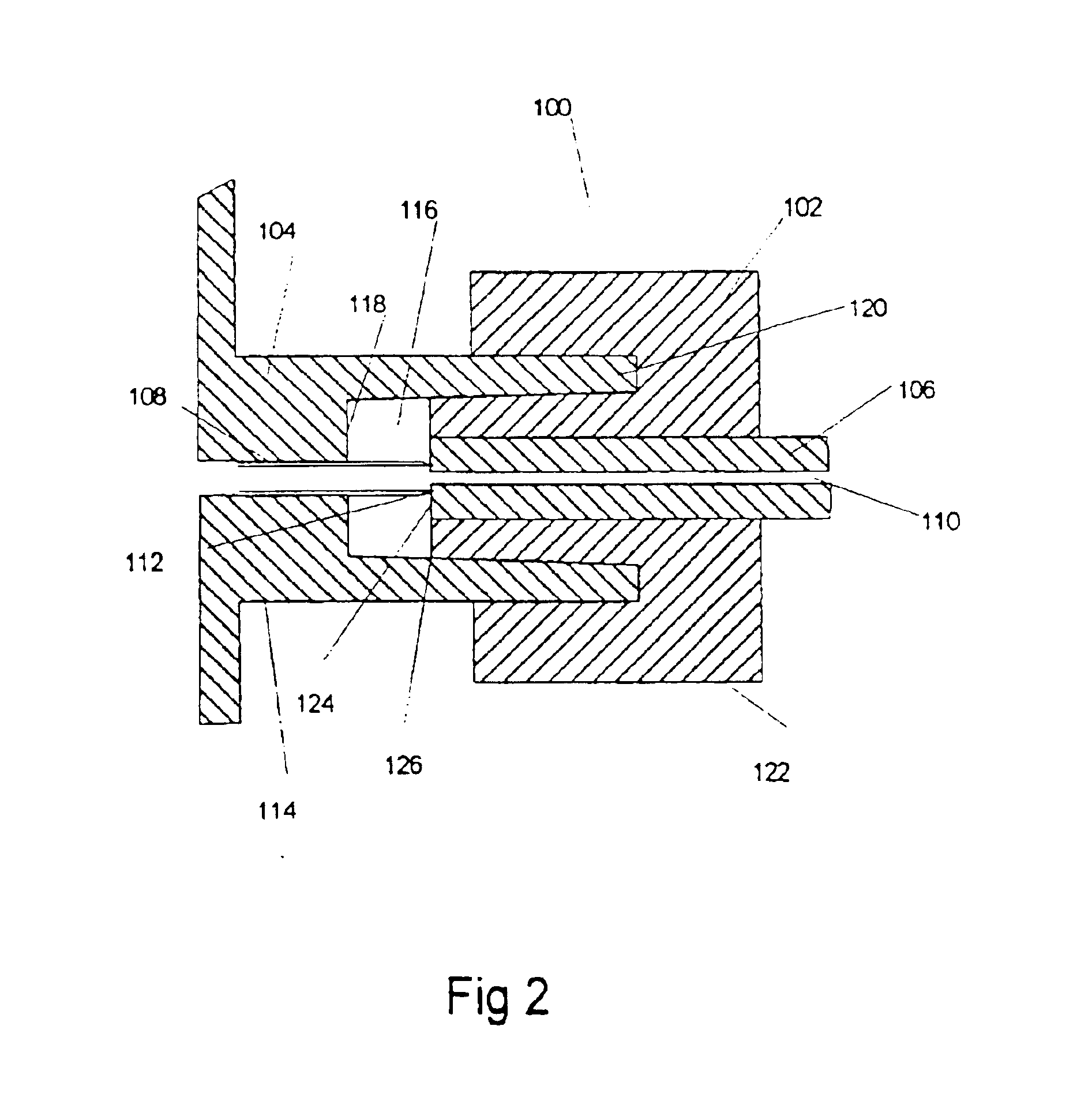Regeneration of biosensors
a biosensor and biosensor technology, applied in the field of biosensor regeneration, can solve the problems of long time drift, short life, frequent calibration and short life, and both a complicated solution and an increase in cos
- Summary
- Abstract
- Description
- Claims
- Application Information
AI Technical Summary
Benefits of technology
Problems solved by technology
Method used
Image
Examples
example i
(Comparative)
In this example the flow was kept constant, and thus no increased flow was applied. The sample (blood) volume was 5 .mu.l, and the base line signal was recorded before and after detection was made. Three consecutive runs were performed.
As is clearly demonstrated the baseline signal before detection increases from 0.10 to 0.22 V, and also the baseline signal after detection increases from 0.15 to 0.34 V.
example ii
(Comparative)
The experiment of Example I was repeated with a fresh sensor and new samples.
Again the base line signals clearly are not reproducible between runs.
example iii
(Comparative)
In this example the flow was also kept constant but a sample prepared from a standard solution and glucose was introduced, and passed through the reactor.
As can be seen, the base line signal is not affected.
PUM
| Property | Measurement | Unit |
|---|---|---|
| pore size | aaaaa | aaaaa |
| volumes | aaaaa | aaaaa |
| time | aaaaa | aaaaa |
Abstract
Description
Claims
Application Information
 Login to View More
Login to View More - R&D
- Intellectual Property
- Life Sciences
- Materials
- Tech Scout
- Unparalleled Data Quality
- Higher Quality Content
- 60% Fewer Hallucinations
Browse by: Latest US Patents, China's latest patents, Technical Efficacy Thesaurus, Application Domain, Technology Topic, Popular Technical Reports.
© 2025 PatSnap. All rights reserved.Legal|Privacy policy|Modern Slavery Act Transparency Statement|Sitemap|About US| Contact US: help@patsnap.com



